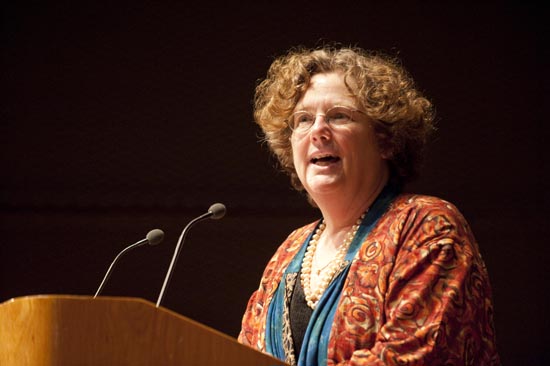by Virginia Sapiro

ONE OF MY CHIEF AIMS IS TO DEVELOP CRITICAL THINKING IN MY STUDENTS. How many times have how many aspiring faculty written this about their teaching philosophy? But what do they mean? I often sense that this statement is a kind of hand wave in the direction of reading and thinking carefully.
So what does critical thinking mean, and how can professors help develop that in their students when the course is supposedly aimed at some subject other than how to think critically?
There are lots of different definitions (of course), but without carefully outlining a whole philosophy (I’m no longer applying for jobs), I tend to extract these elements.
I just took a side look at the Stanford Encyclopedia of Philosophy, and its article on critical thinking begins with the observation that John Dewey used the term “reflective thinking,” which he defined as “active, persistent and careful consideration of any belief or supposed form of knowledge in the light of the grounds that support it, and the further conclusions to which it tends” (from his How We Think, https://plato.stanford.edu/entries/critical-thinking/). This is pretty good, I think.
For me, critical thinking involves turning assumptions and beliefs into questions or hypotheses, or at least placing confidence intervals around assumptions and beliefs, by which I mean assigning a certain degree of uncertainty to them and leaving them open to question. Now, it is impossible to be a coherent thinker and have no assumptions or beliefs, or to keep those confidence intervals too wide. So, along with Dewey, I give a bit role to the “grounds to support” these assumptions and beliefs, as well as the grounds to reject the assumptions and beliefs. With the right balance of evidence and observation, the right balance of grounds to support and reject, the confidence intervals around what I take as an assumption or belief to serve as part of the structure of my thinking tightens.
This last paragraph made me think about how I use assumptions or beliefs in my thinking that I find plausible, and reasonably well confirmed, but not firmly so. That affects my train of thought, because it introduces more “what if” pieces to account for alternative plausibilities.
That may all sound too abstract. But I can make it more concrete with reflections on how I think about this when I teach.
The core bit is turning assumptions and beliefs into questions or hypotheses, and giving them an appropriate degree of uncertainty, along with figuring out the kinds of evidence, or grounds, on which one can gain confidence. This in turn requires real focus on what constitutes evidence or grounds, what methods one can use to examine evidence. As a (social) scientist I am also deeply committed to the principle that really good critical thinking requires looking at least as systematically and vigorously for evidence or grounds against my base assumption as for. This is very challenging for students, especially those who have mostly been taught that one looks for evidence that “backs up” one’s statement. That, I believe, is fatal to critical thinking, but all too common.
By “method” of gathering and considering evidence I do not mean a particular (social) scientific method. In most of my classes the “method” of evidence gathering and consideration is reading relevant literature. Thus, even though my courses are “substantive;” that is they are not on writing and research per se, I have learned not to take for granted that my students understand how to use the library for their research, how to decide what sources to gather and how to use them, how to read them, how to integrate the knowledge they think they’ve picked up. In fact, even though our students are really good – it’s hard to get into BU these days, especially the College of Arts & Sciences, and they have had their writing courses by the time they get to me, I find lots of them don’t really understand these things. Shockingly so, in fact. It’s also easy to detect the parts of the university in which they spend the most time. The humanities majors tend to treat the sources as texts with an argument they should just report. The students from the School of Communication seem least likely to understand how to use the library (my colleagues from over there hate it when I say this, but I took up guessing from papers I received what their majors were, and I was right much of the time on this), and report on their sources as though they are “quotes” rather than reports of evidence to analyze.
One problem is that a lot of students (and, of course, graduate students and some faculty) seem to think that critical thinking means being critical in the sense of finding fault with. Some folks think that a sign of being smart means showing they are smarter than by finding fault. That, to me, is the definition of sophomoric, not critical thinking. I’ll just leave that there.
Faculty have to demonstrate critical thinking in their own work, in their teaching, to teach it. I’ll just leave that there, too.
Another observation that is crucial – having a particular political point of view is not the same as engaging in critical thinking. But that is a derivative of saying that finding fault is not a definition of critical thinking.
I think that one other thing is also a characteristic of critical thinking that may not be linked as often: Being able to link the thinking with implications for action. But that is for another time.
Virginia Sapiro, Letter June 11, 2021, The Retirement Letters (A Blog), theretirementletters.wordpress.com/2021/06/11/june-11-2021/.